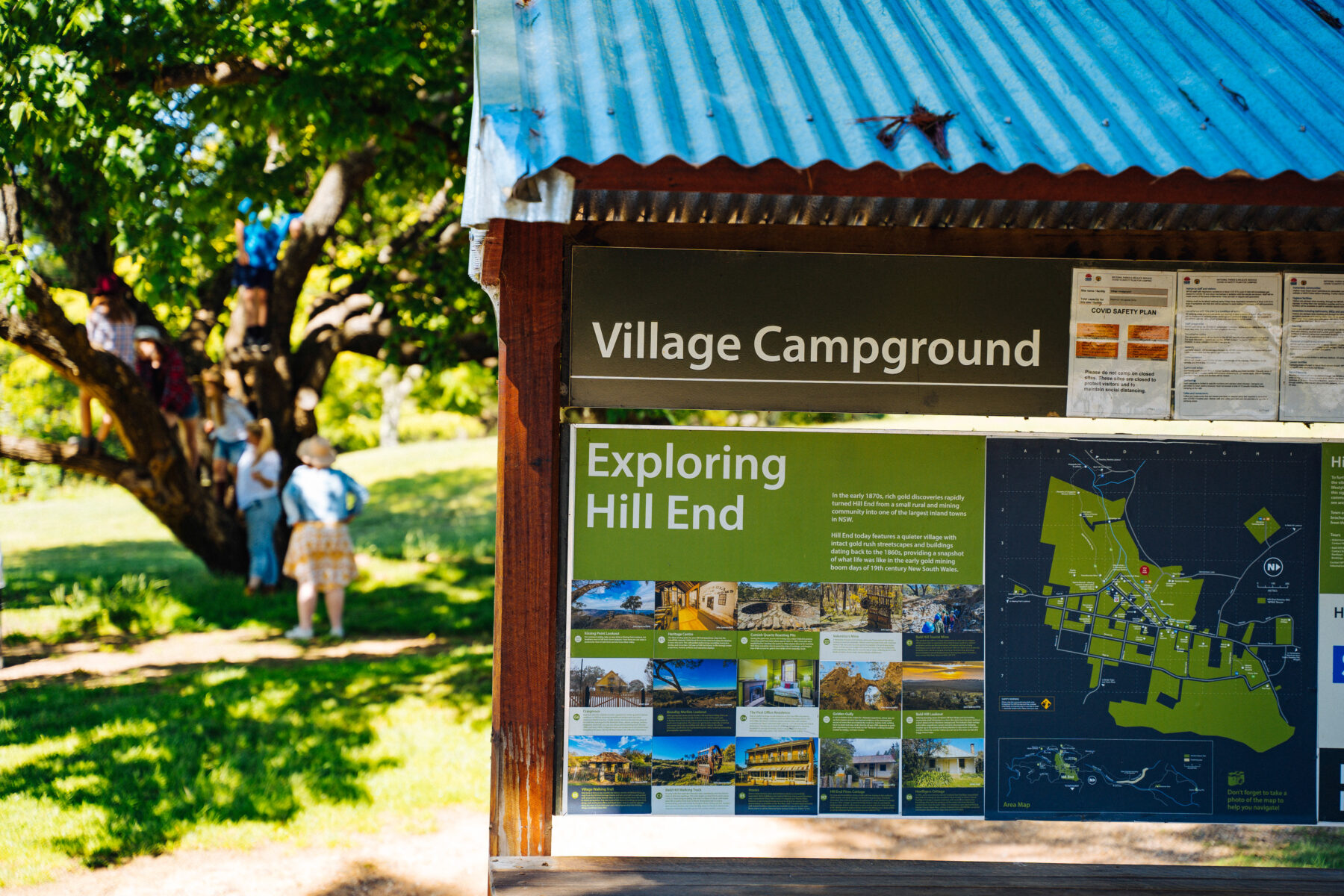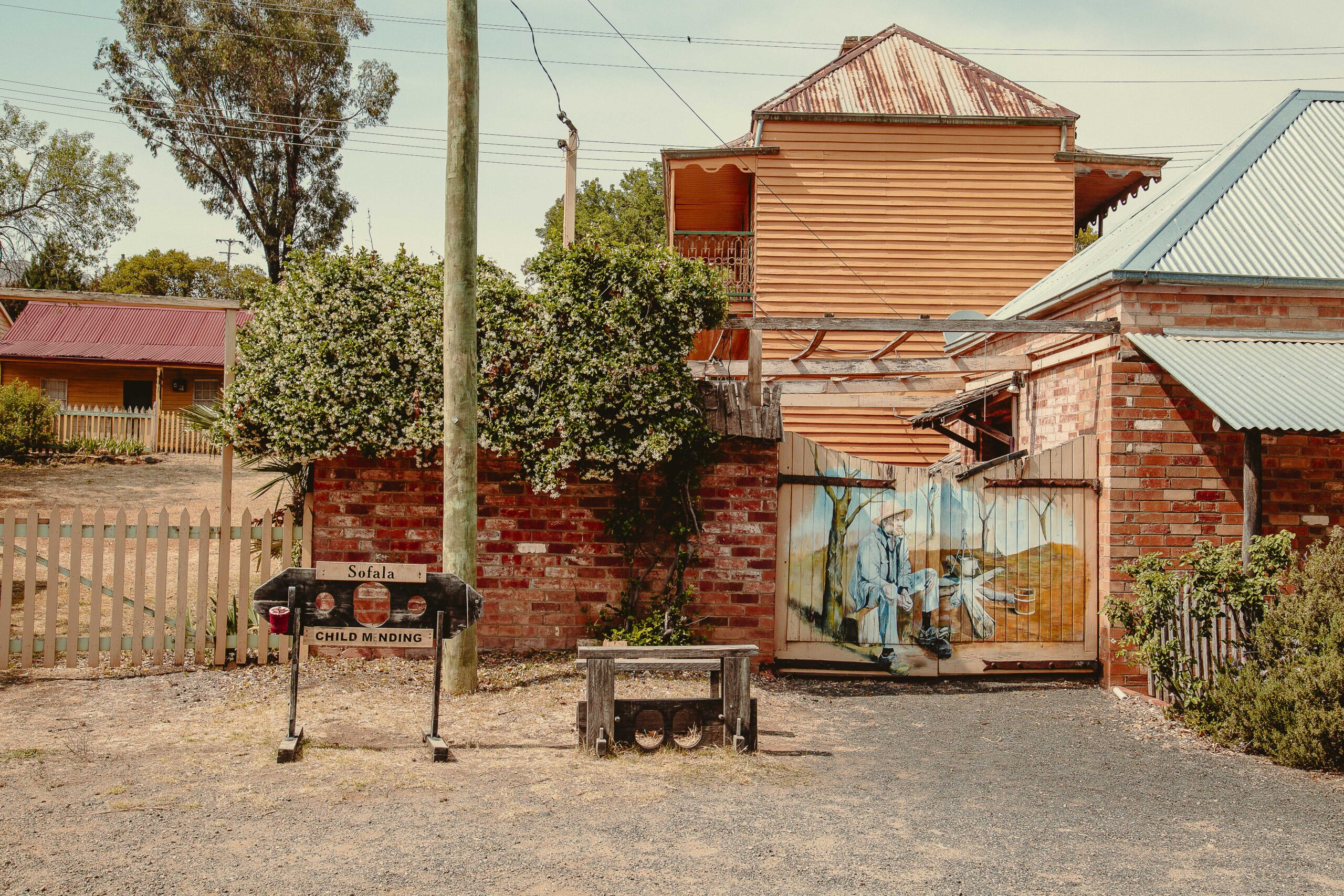Golden days in Bathurst

This article is brought to you by Bathurst Regional Council.
When the gold rush careened into what we now call the Bathurst region in 1851, people came from near and far to try and find gold and make their fortune. With the miners came the need for pubs, shops, banks and general infrastructure. Several small villages sprang up in the region to support the growing population of miners and their families, including Hill End, Sofala, Rockley and Perthville. When the gold ran out, the population of these communities dropped, but the legacy of the gold rush is still very much evident in the region. Go back in time by visiting historical sites, museums and participating in cultural events that commemorate this important period in Australian history – events like the 2024 Bathurst Heritage Trades Trail.
Strike it rich in Hill End
Located 75 minutes north of the Bathurst city centre, Hill End has the honour of being the site of the largest single mass of gold ever found. Once the news was out that the precious metal had been found, thousands upon thousands of miners came here to try their luck around the Turon River, north of Bathurst. During the quartz reef boom in 1872, on another normal night at the Star of Hope mine, rock was cleared by a dynamite blast. What it revealed was the Holtermann-Beyers Nugget, the single-largest specimen of gold ever found. There would have been exuberant celebrations at one of the hotels – there were 28 on them at Hill End at one time. Perhaps it was the Royal Hotel, which opened in 1872 and is still operating.

Hill End, New South Wales Image credit: Bathurst Tourism
Hill End is now a Heritage-listed historic site and is managed by National Parks NSW. When you visit Bathurst for the 2024 Heritage Trades Trail, consider staying an extra few days to explore Hill End. Accommodation is available in settlers cottages that have been lovingly restored, and there is plenty to do. Visit the History Hill Museum with its gold rush artefacts, check out the original diggings, or try your hand at gold panning. If you haven’t tried before, take a tour with Jhob Drinkwater, a local gold and town history tour guide. He’ll take you to the Tambaroora Fossicking Field and show you how it’s done and how to identify gold. You can even visit a mine to see what it would have been like for the miners, with Son of Hope and Bald Hill both excellent options. The Great Western Store, the General Store and Northeys Store are all worth a visit, as is the new Heritage Centre, next to the General Store Cafe. Check each place for opening hours before you go. Do the walk around the town – there is an audio tour available at the Bathurst Step Beyond app.


Panning for gold in Hill End, New South Wales. Image credit: Bathurst Tourism
The rise and fall of Sofala
Sofala is a sleepy village adjacent to the gurgling Turon River. Around 200 people live here, but turn back the clock to the 1850s and it was a happening place. Sofala was built in 1851 after gold was discovered. It is the oldest surviving gold rush town in Australia, and has quite the story to tell.
About 40 minutes’ drive from Bathurst, Sofala grew from nothing once the news about Edward Hargraves finding gold in 1851 spread like wildfire. The population grew to 26,000 people that same year, with miners panning the waters of the river for the rich alluvial gold. According to local historical sources, an experienced panner in the early days of the Turon River Gold Rush could bring in around 1.4kg of gold a day, garnering around $100,000 in more recent markets.”

Sofala, New South Wales. Image credit: Bathurst Tourism
The success of commercial mining in the area peaked and waned over the decades, finally grinding to a halt in 1948. Revisit the mining days by doing the historic walking tour around these pretty streets flanked by gold rush-era buildings. Artist Russell Drysdale liked the town’s streetscape so much he painted it in 1947, in his work simply called Sofala, which is hanging in the Art Gallery of New South Wales. Stroll by the Royal Hotel, across the Sofala Footbridge, walk along the Turon River and find remnants from the mining days, including gravestones, diggings and remains of a Chinese miner settlement.
You can pan for gold on a tour, or try to find something else in the Turon – fish. Nearby Wattle Flat, another small mining community, offers the Buurree Walking Trail, a 4.9km trail which boasts scenic views of Sofala as well as birdwatching opportunities.
For a fun weekend, the Rebellion on the Turon is a reenactment of the 1853 Turon Rebellion and is a weekend that comes with cannons, shootings and duels, floggings, market stalls, exhibitions, Cobb and Co coach rides and more. Keep your wallet hidden, as ‘bushrangers’ might hold you up for your gold (coins).


Sofala, New South Wales. Image credit: David Roma
Other gold rush gems
A National Trust Historic Village, Rockley is 30 minutes from Bathurst and has 21 Heritage-listed buildings deemed to be of national significance. A land grant was awarded to William Lawson (of Blaxland, Lawson and Wentworth fame) in 1818, but it was named Rockley by a Captain Steel who received a grant here in 1829. Copper was discovered in the region in 1847, then gold blew onto the scene. In the following decade, thousands of gold miners moved to Rockley as they worked the Isabella, Abercrombie and Campbells Rivers in the hopes of funding their futures.
Now with a population of around 180, Rockley is an undiscovered gem and is well worth a visit with many fascinating places. The Rockley Mill and Stables Museum is one. Built as the Stangers Flour Mill in 1862, you can learn about the rich history of the area in this three-storey building. Browse around Georgian and Victorian era mill machinery, read old police records and marvel at the period clothing of the day. The former post office, the Stables and Coachhouse, the police station and the Club House Hotel are just some of the interesting buildings in town. After you have explored the town, enjoy a drink or lunch at the Rockley Pub which has undergone a renaissance under renowned chef Matt Moran. The two-storey building now offers a new Moran-style pub menu and drink list in what is a classic country hotel.


Rockley Mill & Stables Museum, Rockley. Image credits: Bathurst Tourism
Rockley is host to several cultural events throughout the year including artisans markets, the Rockley rodeo and the Rockley Gardens and Art Festival, which raises money to maintain the historic School of Art building.
Around 15 minutes from Bathurst, Perthville, known for its autumn colours, has one extremely notable place to visit. St Joseph’s Convent was established here in 1872 and The St Joseph’s Heritage and Conference Centre tells the story of the convent and its famous founders – Saint Mary MacKillop and Father Julian Tenison Woods. Learn about the Sisters of Saint Joseph and their ongoing work through storyboards and displays showcasing a collection of Josephite memorabilia, Saint Mary MacKillop artefacts, costumes and books. You can listen to an audio tour as you stroll around, available through the Bathurst Step Beyond app.
The 2024 Bathurst Heritage Trades Trail
Join in the celebration honouring the vibrant history of Bathurst, paying tribute to the trades and traditions that have shaped the region. Held at Bathurst Showground, this event shines the spotlight on rare and forgotten crafts from Australia’s oldest inland European settlement.
Step inside the pavilions to marvel at exquisite craftwork and venture outdoors to explore the agricultural and heavy industry trades that define the region’s heritage. From traditional Indigenous tool making to the artistry of blacksmithing, saddlery, and whip cracking, there’s a wealth of skills on display. Delve into the world of glass artistry, lace making, carpentry, and more, including the fascinating crafts of cigar box guitar and violin making.
Experience the nostalgia of a ride aboard an authentic Cobb & Co Coach, and embark on a journey through Bathurst’s rich heritage with a complimentary hop-on, hop-off bus tour, visiting the city’s most significant museums and historic houses.


Image credit: Bathurst Tourism
With an abundance of activities to enjoy, from demonstrations to interactive experiences, you’ll want to spend both days immersing yourself in the Bathurst Heritage Trades Trail to uncover the places and stories behind this burgeoning region.
The Bathurst Heritage Trades Trail is on 16-17 March at the Bathurst Showground. Visit the website here for all of the details.
This article is brought to you by Bathurst Regional Council.




